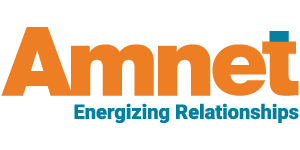[Approximate Reading Time : 4 mins]
HTML: What You Should Know
Hypertext Markup Language (HTML) is a globally acclaimed programming language that contains only text and can refer to multimedia, Cascading Style Sheets (CSS) for layout, and JavaScript for interactions. This format was developed decades ago for a transition to paperless content storage and dissemination.
HTML in Digital Publishing
The latest version is HTML 5, which has revolutionized web page design. It is widely used in publishing, as it easily aligns with today’s technological advancements.
The increasing number of small-screen content consumers demands a mobile-friendly format. Web design, appearance, searches, interactions, and sharing are important to content reachability. These can be formatted through HTML, which is predominantly used worldwide.
Advantages
HTML is free. Yes, using it means considerable cost cuts. Production, updation, development, customization, and distribution can be inexpensive.
HTML is optimal for search engines, browsers, and small-screen devices. Browsers support HTML more than other languages, so your content gets greater visibility. Content optimization for browsers is also easier.
Search engines can easily access, read, and index your content in HTML formats. This semantic coding increases the accuracy of indexing by content rather than appearance. Markup tags improve page loading time and can boost the ranking of your content in search engine results.
Enriched, interactive content can be easily shared and linked with data repositories.
The content is loaded as and when we view, allowing for quick access and offline storage.
It allows selectable text and alternate texts for screen reader accessibility.
The up-to-date linked content can include supplementary material and still have a smaller file size when compared to PDFs.
Why Is HTML the Future of Publishing?
HTML5 can transform user interaction with your content, thus making it more attractive. Bookmarking and sharing features make social media marketing much easier. HTML digital books are just like printed books but can be made accessible on all devices, reduce production time, are high in quality and effectiveness, cost less, and are better for our environment. With HTML workflows, you can store your content without third-party pipelines. Incorporating new functionalities is easier in HTML and can augment your user experience. Native multimedia usage, font embedding, and zoom control are features to note. Moreover, HTML can be encased within a desktop or mobile app and can work on both iOS and Android devices, making it very versatile. HTML has the potential to bring the industry together and forward. Invest in this mainstream format, and be ready to advance when new technology arises.
Listen to the experts discuss what is best for the industry today, HTML, technological advancements, and more in this exciting roundtable discussion: “Reimagining Publishing: Content Production Simplified,” by Amnet, conducted in association with ConTech Live, at https://www.youtube.com/watch?v=9iNgO2JJClU.
The rapidly changing industry requires in-depth knowledge to predict and prepare for future trends. Build future-ready publishing capabilities with Amnet’s publishing services that meet your business-specific and scalability requirements. Get in touch with us at https://amnet-systems.com/publishing-service/.
Sources:
1. https://openjournalsystems.com/digital-publishers-benefit-html/.
2. https://fliphtml5.com/html5-digital-publishing-advantages.php.
3. https://www.linkedin.com/pulse/10-reasons-consider-html-digital-publishing-getting-started-putney/.
4. https://techgyo.com/the-future-of-html5-in-publishing-development.


